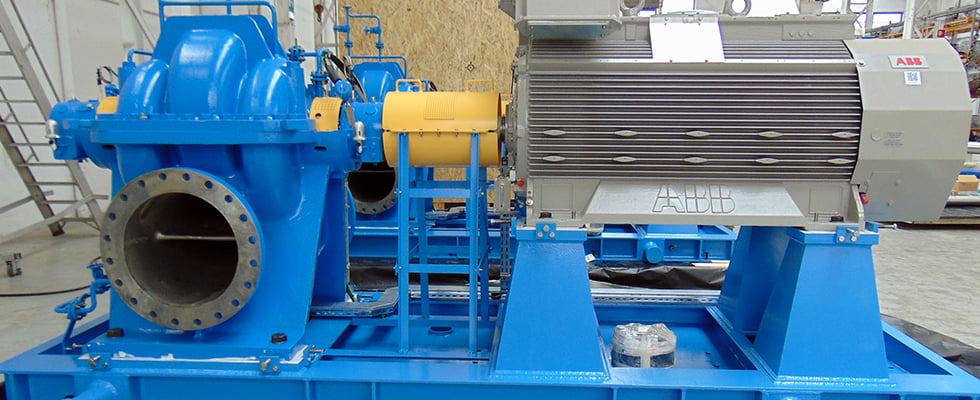
Water Scarcity
Numerous experts, such as economists, scientists and geopolitical analysts, warn it is time to stop taking water for granted. Even though water covers 70% of the planet, only 3% of it is suitable for human use. With industrialization and an ever-growing and wealthier population, human demand for water is increasing at a rapid pace. Climate change has further exacerbated the issue, posing a significant threat to this precious resource.
The Organization for Economic Cooperation and Development (OECD) estimates that by 2030, more than half of the world’s population will be living in areas where the water supply is severely stressed.
The potential consequences of water scarcity are not just theoretical. They could manifest as a “water shock,” leading to a sharp increase in prices that would affect nearly every industrial sector from agriculture to energy. This scenario could prompt leaders to address the issue more urgently, especially in the context of climate change.
Desalination: A Growing Source of Fresh Water
Desalination is becoming an increasingly significant option for providing a fresh water supply for drinking and industrial purposes, especially in regions where water scarcity is already a concern. For instance, in Saudi Arabia, desalination accounts for 70% of the country’s drinking water supply. Due to the global water stress situation, the desalination industry is expected to continue to grow rapidly. According to a 2024 report by Adroit Market Research, the water desalination market is projected to grow from $13.8 billion in 2019 to $29.1 billion in 2030, with a compound annual growth rate (CAGR) estimated to be 9.1% during the 2022-2030 period.
.jpg)
Seawater is the most prominent source utilized for treatment via desalination, but brackish water, industrial wastewater and groundwater are the next key saline water sources that can be effectively treated and converted to usable, potable water.
The Latest Technological Developments in Desalination
Membrane-based technologies, in particular reverse osmosis (RO), have been taking the lead over thermal-based technologies such as multistage flash (MSF) and multi-effect distillation (MED). In fact, technological improvements have led to significant performance increases of RO membranes, including increases in efficiency and durability, extensions of applications and reduction of costs and energy consumption, including solar-powered solutions. Today, RO plants have come to represent 60% of desalination plants in terms of capacity.
.jpg)
An OEM providing pumping systems and related service solutions is playing an active role in the new energy efficiency focused seawater reverse osmosis (SWRO) desalination market. For example, the company recently supplied engineered pull-out type vertically suspended pumps for seawater supply, as well as single-stage axially split double suction horizontal pumps for potable water distribution, for the world's largest desalination plant. Located in the United Arab Emirates (UAE), this plant produces 40 million imperial gallons per day (MIGD) of potable water and serves a population of 700,000. The plant follows the latest strategy of using electricity generated from solar power for desalination SWRO technology to increase efficiency. It represents a critical project in the modernization of the water sector of the emirate in question that will contribute to the reduction of the nation’s carbon footprint to one of the lowest in the world by 2050.
Contributing to the Energy Efficiency of Existing Desalination Plants
The same pump manufacturer was involved in an energy-saving project for a Middle Eastern MSF desalination plant. The plant, which started operations in the late 1970s, consisted of six distillers, each with a capacity of 5 million imperial gallons (MIG). After more than 30 years in operation, the plant initiated an energy saving project related to their brine recirculation and seawater supply pumps, which represented the primary power-consuming machines at the plant. The plant’s initial study led them to exclude the outright replacement of the pumps and instead focus on the replacement of key components to maximize the energy saving/investment ratio.
The plant selected the aforementioned pump manufacturer/service provider as the proposed hydraulics optimization solution predicted they could achieve higher energy efficiency gains than what was expected while preserving the existing interfaces and materials as per their request.
.jpg)
The results were remarkable. The energy consumption of the brine recirculation pumps was reduced by 123 kilowatts (kW) per pump, equivalent to a 9.8% energy efficiency improvement. This led to a 1.5 megawatt (MW) annual energy savings at the plant level, corresponding to 7,630 tons of carbon dioxide emissions reduction.
Pump manufacturers have a vital role to play in shaping a sustainable future that is water secure and energy efficient. This can be done not only by supplying new high-efficiency equipment for new plant projects but also by providing upgrade and rerate solutions for equipment installed at existing plants.

